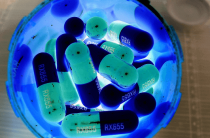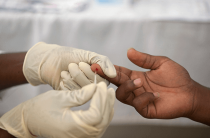Allergy is a deviation in the functional activity of the immune system, as a result of which an inadequately strong immune response to safe substances occurs. Allergy triggers are most often plant blooms, food, house dust, animal excretions, or drugs. But this list is far from exhaustive, because a variety of substances and phenomena can become provocateurs of allergic reactions.
At the moment, allergies represent the most common disorder. Its development is facilitated by malnutrition, in which there are less and less natural components with their replacement with synthetic ones, a negative environmental situation that has swept the whole world with paranoia about sterility and other factors surrounding modern man. Of course, this ailment was described in medical writings dating back several centuries BC. But such prevalence, among the population of the Earth, it never had. In view of this, modern medicine pays great attention to methods of treating and diagnosing this disease.
When is it necessary to take allergy tests?
And so, allergy tests are complex diagnostic measures required in order to establish the nature of the onset of symptoms, as well as to identify the specific source that provokes them. Provoking substances in medical science are called allergens. In addition, general and special tests are carried out so that the doctor can assess the features of the immune system, which allows shedding light on the features characterizing the course of the immune response in each individual clinical case.
When to get tested for allergies:
- the patient notices signs of an allergic reaction present at certain times of the year or after contact with any substance;
- before starting drug therapy, if there is evidence that the patient has a history of drug allergy;
- antibacterial and antiviral therapy for rhinitis or conjunctivitis do not help reduce the intensity of the disease;
- the patient is engaged in industrial activities related to the chemical industry and is experiencing respiratory or skin symptoms of an allergy;
- in the case of skin reactions as a result of a food allergy that develop in a delayed scenario, which makes it impossible to establish a causal relationship between a certain product and the onset of symptoms;
- in order to monitor the work of the immune system during an allergic reaction;
- in the family of the patient there were people with allergic diseases, as a result of which it can be assumed that there is a tendency to develop allergies.
Also, analyzes are taken in order to confirm the nature of the allergen. This measure is needed to make a full diagnosis and one hundred percent establish the nature of an allergic reaction. In a number of clinical cases, in order to shed light on the features of an allergic disease, certain biological material associated with allergic processes is examined. Basically, in addition to blood, the material for research in the laboratory is nasal and ocular secretions, which are abundantly supplied during manifestations of allergic rhinitis and conjunctivitis.
Allergy and complete blood count
It is the general blood test that serves as the first diagnostic measure for any disease. In addition to the fact that it allows you to assess the general state of health, according to the blood formula, there are a number of indicators that, with a general blood test, can become arguments in favor of the diagnosis of “allergy”. In addition, a general blood test allows you to determine the choice of drug contraindications. Careful monitoring of the biochemical composition of the blood allows you to prescribe a treatment that will be carried out with minimal side effects.
With allergies, in addition to standard indicators, the direct concentration of eosinophils, which are special immune cells, is of great importance. For this reason, it is mandatory to donate KLA to allergy sufferers. Eosinophils in the human body, in addition to the direct fight against various viruses and bacteria, play the role of producing antibodies. Most allergic reactions go away with an increase in the level of these blood components, since it is the antibodies that send the signal to start immunoallergic reactions.
An increase in eosinophils in the blood can also serve as an indication of the following phenomena:
- the presence of parasites in the body;
- pulmonary pneumonia;
- disorders and diseases of the gastrointestinal tract;
- cirrhotic transformations of the liver;
- inflammatory processes of the joints;
- hereditary immune deviation;
- radiation sickness;
- whey protein intolerance;
A blood test is mandatory on an empty stomach. This is due to the fact that the components of food affect the results of the analyzes significantly. Moreover, the blood formula is directly dependent on what the patient ate before the analysis. For this reason, in most cases, the best time to take a blood test is in the morning. From smoking tobacco and drinking alcoholic beverages, you must refrain a few days before the test.
Despite its simplicity, the analysis of the blood formula can say quite a lot both for allergies and other diseases. Its results help to direct further laboratory examination in the right direction, although in themselves they are only an integral part of the diagnosis.
Blood test for antibodies
A blood test for antibodies makes it possible, based on the reaction of the blood, to determine both the presence of an allergic immune response in a patient and shed light on specific sources of allergy. Antibodies are specialized proteins that, when an allergen enters, are secreted by immune cells. Their main purpose is to give a further signal to the immune system that it is necessary to trigger allergic reactions. In this regard, the diagnosis of the blood formula has the basis that with the introduction of the allergen, the level of antibodies also steadily increases.
For this, the patient donates venous blood, after which it is placed in special laboratory conditions. Subsequently, the blood material is exposed to special solutions that contain a certain concentration of hypothetical allergens.
Where to get tested for allergies?
It is possible to take a blood test for antibodies only with the use of special equipment that allows you to track the blood formula for antibody indicators. In view of this, such diagnostic methods can only be carried out in clinics or in special public or private diagnostic centers.
Advantages and disadvantages of the method:
| Advantages |
|
| Flaws |
|
Skin tests
The skin is an organ that performs the function of protection, because of this, the skin has a developed complex of local immunity. Thanks to the developed immune system in the tissues of the skin, it is possible to diagnose an allergic reaction based on skin manifestations. This is due to the peculiarity of the skin, which have in their composition the same immune cells as the mucous membranes of the eyes and nose. Through the skin, you can track the presence of not only contact allergies, but also drug, respiratory and a number of other types of the disease. Controversial results of skin tests can only be found in the context of food allergies requiring separate diagnostic procedures.
Allergy tests should be done in this way only within the framework of a medical hospital. This is due to two key points. Firstly, not the allergens themselves are used, but the components extracted from them in the form of special solutions. Secondly, due to the fact that there is a direct effect on the patient of the allergic substance, the risk of exacerbation of the disease is high.
Depending on how sensitive a particular patient is to the effects of an allergen, skin tests are taken in various ways. This can be either the imposition of a special allergen-impregnated material, in case of high sensitivity, or the introduction with a syringe, if the patient has mild allergic manifestations.
Advantages and disadvantages of this method
| Advantages |
|
| Flaws |
|
Provocative tests
Allergy tests performed by challenge tests are similar to those performed by skin tests. They are handed over mainly in those moments when the patient has respiratory manifestations of allergies. These include: cough, tearing, redness of the eyes, swelling of the eyelids, nasal congestion, sneezing attacks, bronchial asthma. These manifestations occur as a result of the allergen settling on the mucous membranes of the eyes, as well as the respiratory system. Allergens that cause them should be light, their particles are small. These can be components contained in various fumes, spices and spices, plant pollen, animal excretions, various types of dust. Microscopic organisms such as mites or fungi can also be the culprit.
To conduct provocative tests, allergen solutions are placed on the mucous membranes or injected into the patient's body by inhalation, through the mouth or nasal opening. Usually, within 20 minutes, the patient begins to experience respiratory allergy symptoms if he has an allergic tendency to this substance. After that, a special sequential treatment of the organ that has been in contact with the allergen is carried out in order to eliminate the allergic reaction. As with the analysis of skin tests, this type of analysis is given only in the conditions of special diagnostic institutions!
Advantages and disadvantages of this method
| Advantages |
|
| Flaws |
|















